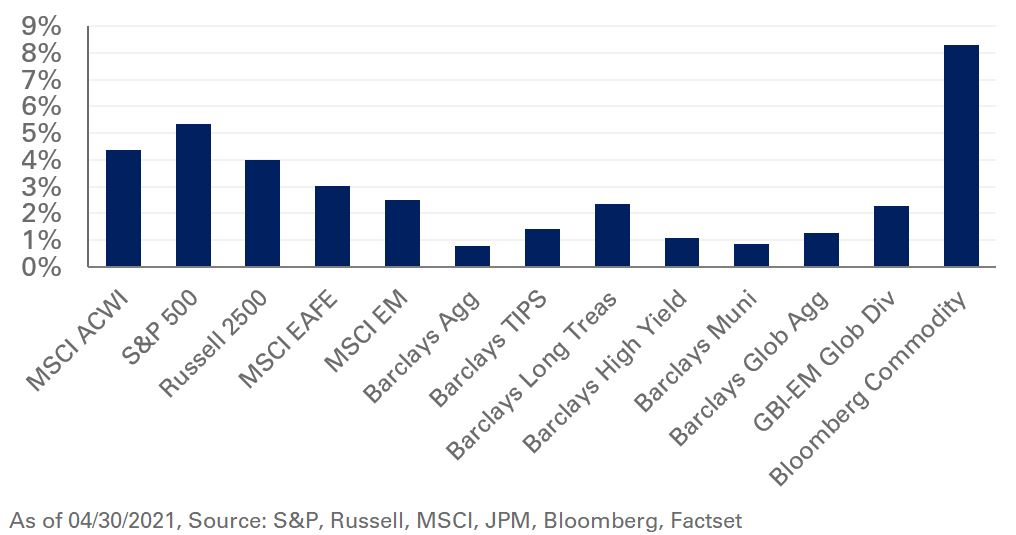Global equities pushed higher in April as a relatively positive macroeconomic backdrop—progress with the vaccine roll-out, stronger-than-expected corporate earnings and ongoing stimulus tailwinds—bolstered market sentiment. In the U.S., the S&P 500 Index posted its third consecutive month of gains, adding 5.3% in April; this marked the best month for the index since November 2020. Outside the U.S., local markets benefitted from broad dollar weakness: the MSCI EAFE and MSCI Emerging Markets indexes gained 3% and 2.5%, respectively.
In fixed income, U.S. yields fell following a significant rise in March. The 10- and 30-year Treasury yields fell 10 and 12 basis points, respectively, resulting in the flattening of the yield curve. Longer-duration fixed-income indexes outperformed with the Barclays U.S. Long Treasury Index up 2.3% for the month. Within credit, option-adjusted spreads modestly tightened, reflecting broad risk-on sentiment. Spreads in lower-quality credit experienced the greatest movement with the U.S. Corporate High Yield OAS falling 19 basis points in April.
Within real assets, commodities rallied given supply chain disruptions and general improvement in the global growth outlook; the Bloomberg Commodity Index increased 8.3% last month. Spot WTI Crude Oil experienced a volatile month with the OPEC+ decision to curb production cuts, but the commodity still ended up 7.4% in April.
The broadly improving macroeconomic backdrop has generally resulted in higher growth and inflation expectations in the near term. While the increase in interest rates this year has been notable, we continue to advocate for investors to maintain a dedicated allocation to Treasuries to support liquidity levels and cash flow needs in the event of a market dislocation. Further, the ongoing support from monetary and fiscal interventions continues to provide a supportive environment for equities. To that end, we encourage investors to favor equities even in the face of modestly higher interest rates.




